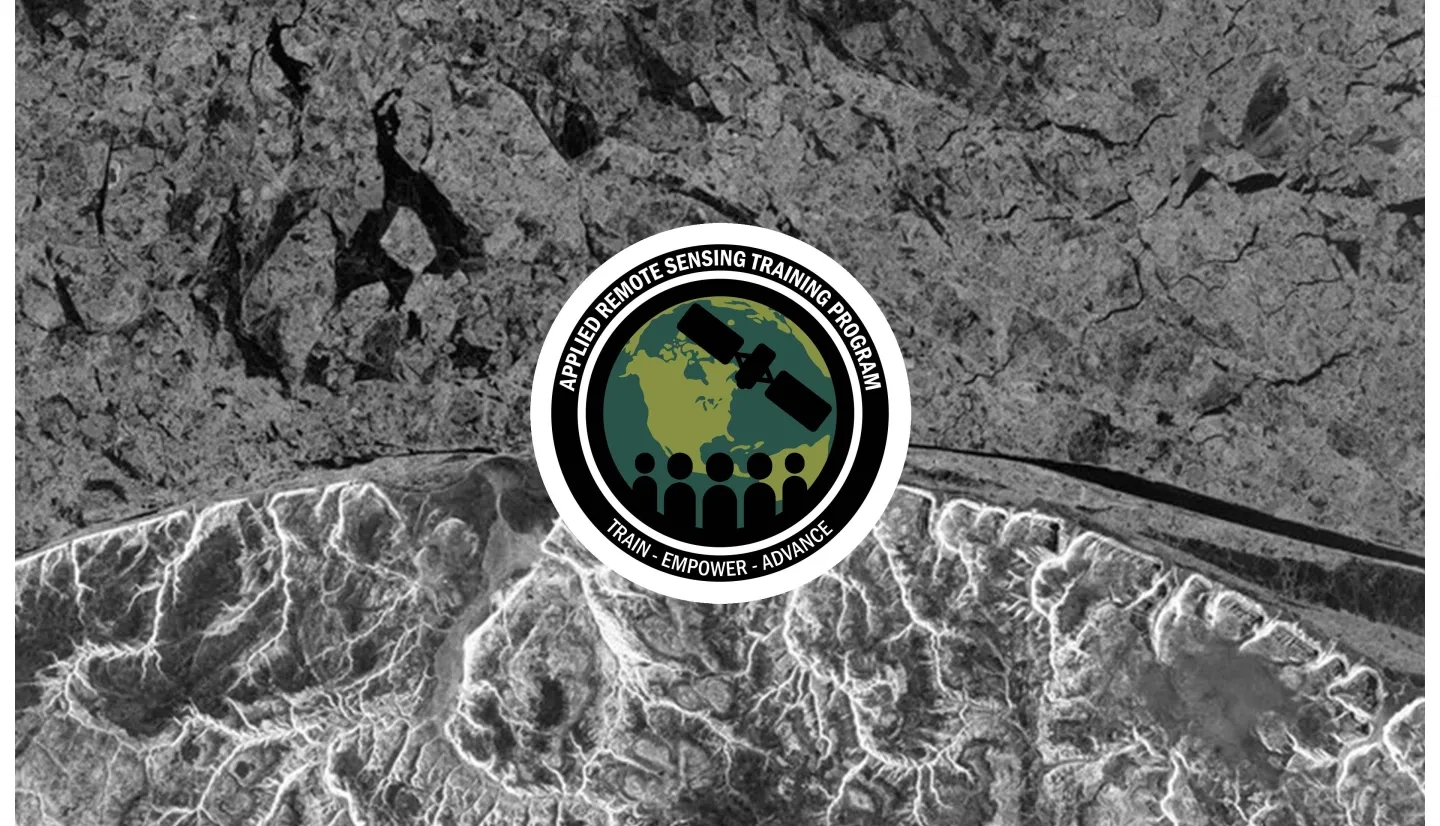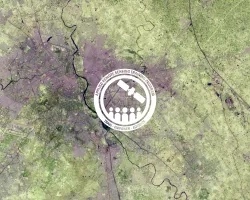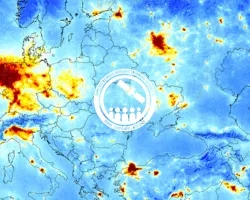Description
October 24, October 31, and November 1, 2023
11:00-13:00 EDT (UTC-4)
This training is a follow-on to the SAR training held in October 2022, which covered detection and monitoring of oil spills, landslides, and floods. This training will expand on the theory and applications of SAR data to detect and monitor floods through the use of SAR time-series in order to more closely monitor the increase/recession of flood waters. This training will also cover two new application areas: the use of InSAR to measure subsidence due to groundwater extraction, and the use of SAR to detect and monitor sea ice. These application areas are important for environmental managers from local, regional, and federal governments concerned with 1.) the impact of groundwater extraction on infrastructure as well as diminishing hydrological resources; 2.) the risk of sea ice on ships and shipping routes as well as the impact of diminishing sea ice on coastal erosion - especially as related to indigenous communities in Alaska and Canada; and 3.) the impact of floods and how monitoring their extent and increase/decrease can help with disaster response activities. This training will address these applications through the use of open-source tools and SAR data to inform on disaster awareness and response and how to best allocate resources to mitigate their impacts.
This training is also available in Spanish.
By the end of this training attendees will be able to:
- Generate subsidence maps due to groundwater extraction to inform risk and resource management
- Detect and monitor sea ice to identify potential risks to shipping and coastal erosion
- Detect and monitor floods in order to more closely monitor increase/recession of flood waters and better inform disaster response and management
Disaster management agencies, including domestic and international government agencies, aid organizations, indigenous communities, students, and academics.
Trainers: Erika Podest (JPL)
Guest Speakers: Malin Johansson (The Arctic University of Norway)
Over the past decade shipping traffic in the Arctic has expanded rapidly and as Arctic sea ice recedes due to climate change, an increased number of vessels with low ice-class are venturing into the region. One hazard that these ships face is striking sea ice and among the most serious hazards is becoming surrounded and stuck in sea ice. The pressure of the ice on the ship’s hull can cause severe structural damage, which can lead to oil spills. The entrapped ship can also drift towards shallower waters resulting in grounding, endangering its crew, passengers, or cargo. In addition, the loss of sea ice makes coastlines become vulnerable to bigger waves from storms, leading to accelerated erosion that impacts people and wildlife. Detecting and monitoring sea ice can help identify areas at risk for ships and also help inform on mitigation strategies along coastal areas in the Arctic. This session will provide a summary of the theory of SAR for detecting sea ice followed by a demo using SAR data with the SNAP Toolbox to generate maps of sea ice.
Materials:
Trainers: Erika Podest (JPL)
Guest Speakers: Eric Fielding (JPL)
Groundwater-related subsidence of land results from groundwater extraction and extreme subsidence from rapid unsustainable extraction often results in major damage to local infrastructure or urban areas where buildings interact with the settlement, and cause cracking, tilting, and other major damage. Monitoring land subsidence through time on the order of centimeters with the use of interferometric synthetic aperture radar (InSAR) can help inform authorities on the surface effects of extraction of groundwater and its potential impact on infrastructure, and help to distinguish unsustainable groundwater extraction from recoverable variations of groundwater levels. This session will provide a summary of InSAR and will focus on how to work with pre-processed interferograms with Jupyter Notebooks and Sentinel-1 data to measure land surface subsidence due to groundwater extraction.
Materials:
- Presentation Slides
- See ASF Open Science Lab to request an OpenSARLab account. Free for non-commercial use.
- Q&A Transcript
Trainers: Erika Podest (JPL)
Guest Speakers: Franz Meyer (Alaska Satellite Facility/University of Alaska, Fairbanks)
Floods are becoming more prevalent and intense. Monitoring these events, their extent, evolution, and impacts can be difficult with optical remote sensing data because cloud cover tends to be prevalent during floods. SAR can penetrate through the clouds and detect inundation regardless of day/night conditions. Information on the dynamic nature of these events can help inform disaster response and recovery efforts. This session will provide a summary of the theory of SAR for detecting floods followed by a demo using Jupyter Notebook and ASF tools to show how to generate flood maps with time series Sentinel-1 data to monitor the increase/decrease of flood waters.
Materials:
- Presentation Slides
- To conduct this lab exercise in Part 3, please launch the HYDRO30 notebook via Binder
- Q&A Transcript
- Homework (Due November 17th)




